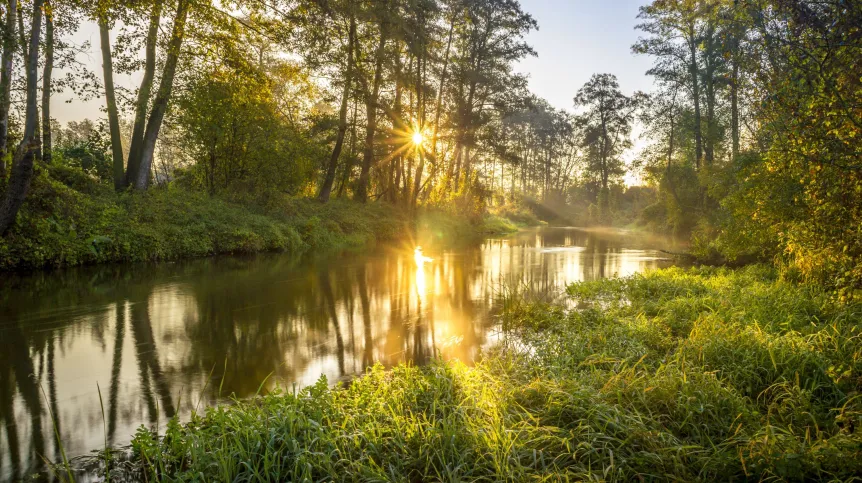
To battle the effects of climate change, the best thing to do is revert to natural landscapes, especially near large rivers, says a leading Warsaw biologist.
In the beginning of August, experts from the UN Intergovernmental Panel on Climate Change (IPCC) presented a report summarising the state of knowledge on the climate change. According to the document, human activity resulted in a global temperature increase by approx. 1°C compared to the pre-industrial times. Without immediate and quick action on a large scale, global temperature increase will reach by 1.5°C between 2032 and 2050. Currently, the most probable scenario predicts a 2.7°C temperature increase by the end of the 21st century, the worst case scenario -a 4.4°C increase.
Biologist Professor Marcin Zych from the University of Warsaw said: “Plants account for about 80 percent of the world's biomass. They really build the world and the world depends on them. As a result, all changes concerning vegetation immediately and automatically translates into the overall appearance and functioning of entire ecosystems. Therefore, the basic question is: which scenario (described by IPCC - ed. PAP) will the world follow? In each of them, we have to be ready for changes in the world of plants and animals.”
He added: “Do everything we can to, for example, increase landscape retention. Avoid concrete river banks, drying peat bogs and changing the landscape so that the rainfall quickly runs down and is not retained in the soil. The best we can do is to revert to natural landscape, which is very favourable also in agriculture.”
Citing the opinions of climate scientists, he said that climate change progresses very quickly and is unlikely to achieve more optimistic versions of warming: inhibit fast CO2 emissions, which would make it possible to stabilize the world at a level similar to the present one. On the other hand, the further increase in the concentrations of greenhouse gases and climate disaster entail greater changes in the plant world.
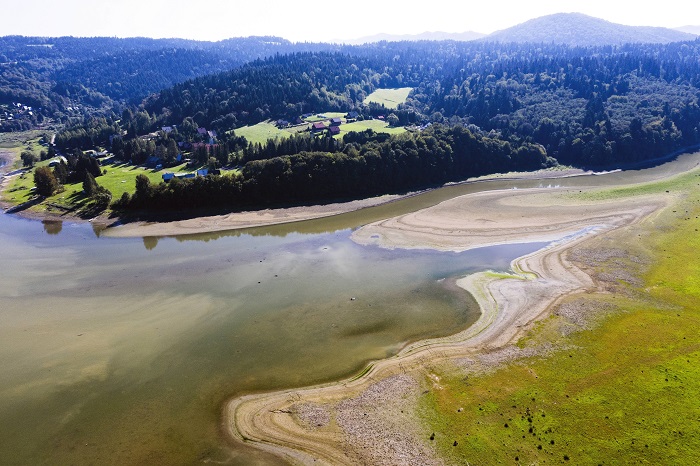
Professor Zych continued: “If we only refer to Europe or Poland, we can say that we should expect desertification and strong destruction of plant clusters, especially in the south of Europe. From the human perspective, some of the areas will become difficult to live, and food production will become complicated or even impossible. As for Poland, we are in a slightly better situation. According to various scenarios, life in Poland will be possible, as will be farm economy and animal husbandry.”
In a broad perspective, warming means two types of serious changes: in the natural environment - for example shifting ranges of various biomes (extensive areas with a specific climate, fauna and flora - ed. PAP), as well as changes in agriculture. Zych said that various parameters are associated with climate change: not only changes in temperature, but also humidity. This has consequences for many species, and in the case of plants they can be dire. He said: “We are already observing the escape of some species associated with a cooler, more humid climate. At the same time, there is a migration of species that cope with higher temperatures and drought to our areas.”
In September 2019, the Institute of Dendrology PAS published the results of the analysis of forests in Poland, including changes in their appearance and range (a newer text on this topic is available HERE). Professor Zych said: “At that time, the conclusion was that species associated with managed forests, dominated by pine and spruce, would practically disappear from Poland in the next few decades. Of course, this does not mean that the trees will +pull out their roots and move on+. Their vegetation will be hampered and the forest clusters, where these species are the main forest organisms, will suffer slow degeneration.
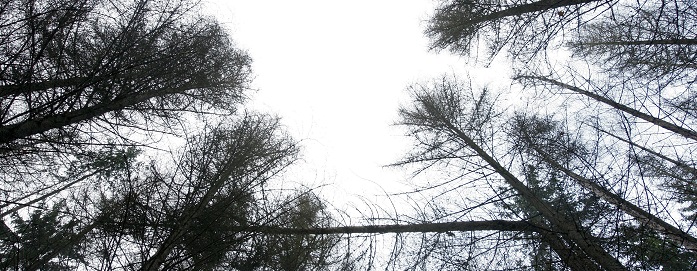
“Recent discussion, or rather dispute over the Białowieża Forest and methods for combating the bark beetle, has a lot to do with climate change. As I mentioned, spruce is one of the species that poorly cope with high temperatures and low humidity. In the areas where conditions change, already today it is more vulnerable to attacks, including the bark beetle. That is why we are currently observing the slow degeneration of spruce forests, not only in the area of Białowieża. It is too warm and dry for them. Forced spruce protection and viewing it as a key economic species does not make sense in a long run. Of course, spruce enclaves will remain. In the several decades, however, other types of trees will be much more at home in Poland, those with higher temperature optima, for example oak or linden. It is utopian to think that the forestry economy will not change. It will be necessary, because the forests that we have now will not adapt to future climatic conditions.”
Climate change, observed and forecasted for a given area, is not limited to average temperature increase, he continues, because the climate is a statistical construct, in which average temperatures are important, but so are their minima, maxima and deviations. He said: “Everything indicates that in addition to the average temperature increase, there will also be an increase in variance: on the one hand there will be more hot days, on the other, there will be a relatively high probability of frost. The opinion that +actually these climate changes are great, we will plant bananas+ is wrong. Some of the species that better cope with higher temperatures will be exposed to extreme weather phenomena (such as extreme rainfall, frost, cold periods - ed. PAP). Climate models show that there will be more such events.
Climate change, he added, will probably force a new approach to cultivation and food production.
He continued: “Cultivation of plants intended for animal feed or human food production requires adequate humidity. Meanwhile, climate change will dry the areas of Poland, a country that already has some of the smallest water resources in Europe. Therefore, on one hand, the vegetation period extends due to a larger number of warm days, which could foster the cultivation of new species that prefer a warmer climate, such as maize, sunflower, millet or soy. On the other hand, the limiting factor for such crops is the availability of water. There are forecasts that part of Poland will not be fit for cultivation due to water deficiency.”
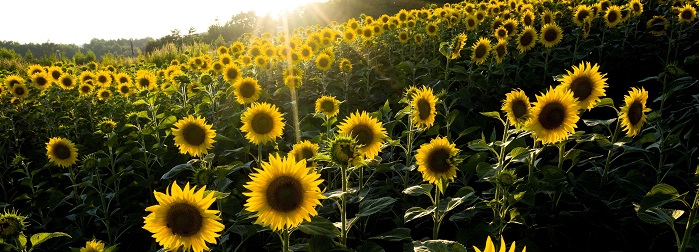
According to Zych, the success of growth of wild and cultivated plants also depends on the presence of various other organisms in the environment, which interact with them (mutualistic species). This includes mycorrhizal fungi and pollinating insects, thanks to which plants can produce seeds and reproduce. Therefore, if these ecological connections also change due to the changing climate - and this will happen, because animals also have their climate optima - there is a high probability of disrupting mutual relations. This can also have a negative impact on the production of seeds in agriculture and the reproduction of plants.
In example, he said: “A few years ago near Warsaw, with students we conducted observation of a forest plant of the genus Corydalis. It turned out that warm, but early spring causes a clear drop in its reproductive success: smaller seed production. Why? During early, hot spring, pollinating insects are still inactive. In response to temperature signal, the plants accelerate their vegetation season, but - because there are no insects to pollinate them - they do not produce seeds. When the temperature change causes such a relationship disruption in the world of plants or animals, scientists call this extension phenology shift. In the warmer world, this will happen more and more often.
“When it comes to wild and cultivated plants, warming also means the inflow of new species of pathogens and those that in the economy we call pests (although as an evolutionary ecologist, I personally do not like this term), for example invertebrates that feed on plants. We can clearly see that over the last decades, more and more such organisms have been arriving from the south. An example is the horse-chestnut leaf miner, a moth that has been a problem for over a dozen years. Now, another insect, which quite recently reached Poland also from the south, attacks boxwood in historic parks, including the eco-garden of the University of Warsaw Botanical Garden. It was not possible before, today it is, because it gets warmer and even the box tree moth can function well in Poland. These are small examples that illustrate a larger processes.
“The more lush the vegetable cover, the more it favours retention. Natural forests are great water reservoir. I'm not talking about simple, depleted forest plantations, where pine dominates. I mean multi-species forests, natural or near-natural ones, which are simultaneously stable against various disorders.”
According to the botanist, warming will bring a drastic change in the appearance of vegetation. He said: “Of course, this will not happen in five years. It is a long process, associated with the fact that plants do not migrate as fast as animals do. But various plant formations will be increasingly exposed to drastic changes.
“Of course, it would be best to stop global warming of the climate. As I mentioned, we are at the point where the return to the climate parameters of the pre-industrial age is impossible. Earth reaches a new optimum; the question is: what will it be? Will we descent into the abyss of the so-called hot Earth? In this scenario it is difficult to predict anything, because the complexity of nature and climate mechanisms include a lot of feedback, which starts at some point and is reinforced, causing exceeding further critical points.”
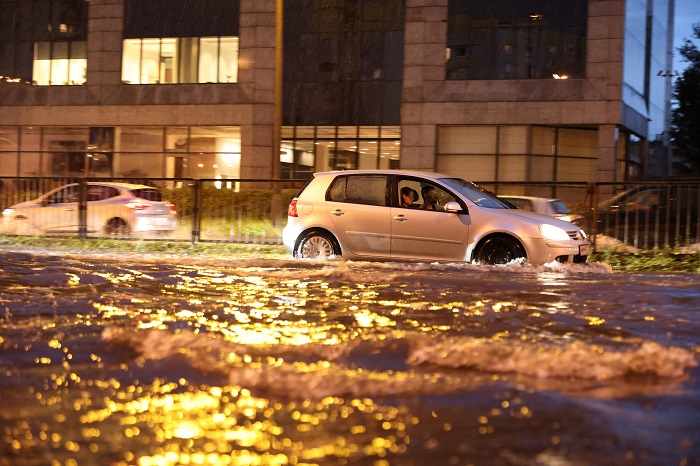
He continued: “We must prepare for extreme weather conditions. Do everything we can to, for example, increase landscape retention. Avoid concrete river banks, drying peat bogs and changing the landscape so that the rainfall quickly runs down and is not retained in the soil. The best we can do is to revert to natural landscape, which is very favourable also in agriculture. We already have a huge water problem, although climate change deniers sometimes say: What is the problem? It's raining after all. But note that the rainfall is almost always violent. It is not a week of nice, small rain which is wonderful from the retention point of view. We have short, violent storms that bring a lot of water that flows rapidly. It is not retained in the ecosystem, if only because of the heavily dried soil.
“Studies clearly indicate that the more lush the vegetable cover, the more it favours retention. Natural forests are great water reservoirs. I'm not talking about simple, depleted forest plantations, where pine dominates. I mean multi-species forests, natural or near-natural ones, which are simultaneously stable against various disorders. If we have a forest consisting of one tree species in the same age, its chances of surviving disorders, for example a strong wind or other violent weather phenomena, are small. Multi-species, multi-generational, heterogeneous systems behave completely differently. They are much more stable.
“Increasing the retention potential of the landscape is also important for agriculture, because it favours the cultivation of plants. We can also consider introducing species resistant to drought.” He added that such species are already appearing, for example maize. Its cultivation used to be quite rare in the landscape, especially in north-eastern Poland. Today, maize fields are virtually everywhere. Sunflower plantations also appear more and more often.
In the context of climate change, Professor Zych said that agriculture itself generates huge emissions of greenhouse gases.
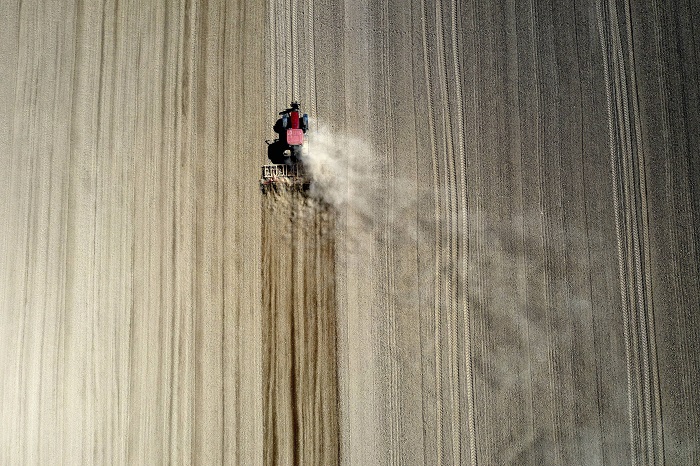
Bachórz, 18.04.2020. Spring field work. Due to the almost snowless winter and lack of rainfall, there is a drought that can contribute to low crop yields. (dd/dw) PAP/Darek Delmanowicz
Therefore, we need a change in agricultural practices, including land cultivation methods. He said: “Currently, a common practice is deep ploughing, which strongly dries the soil and causes erosion. An image from spring travel outside the city are clouds of dust from dry fields intended for sowing maize, for example. In the perspective of further climate change, we should think about switching to non-ploughing methods. These methods exist, but require a slightly different approach, perhaps changing habits. A serious problem will be the matter of crop irrigation, especially with regard to vegetable crops that require a lot of water. If we want to continue to grow plants, we have to start thinking about the effective ways of irrigation. It's about more directional and technically advanced ways of supplying water and retaining it in the soil: mulching or techniques that prevent soil overdrying.”
PAP - Science in Poland, Anna Mikołajczyk-Kłebek, Anna Ślązak
amk/ zan/ kap/
tr. RL













